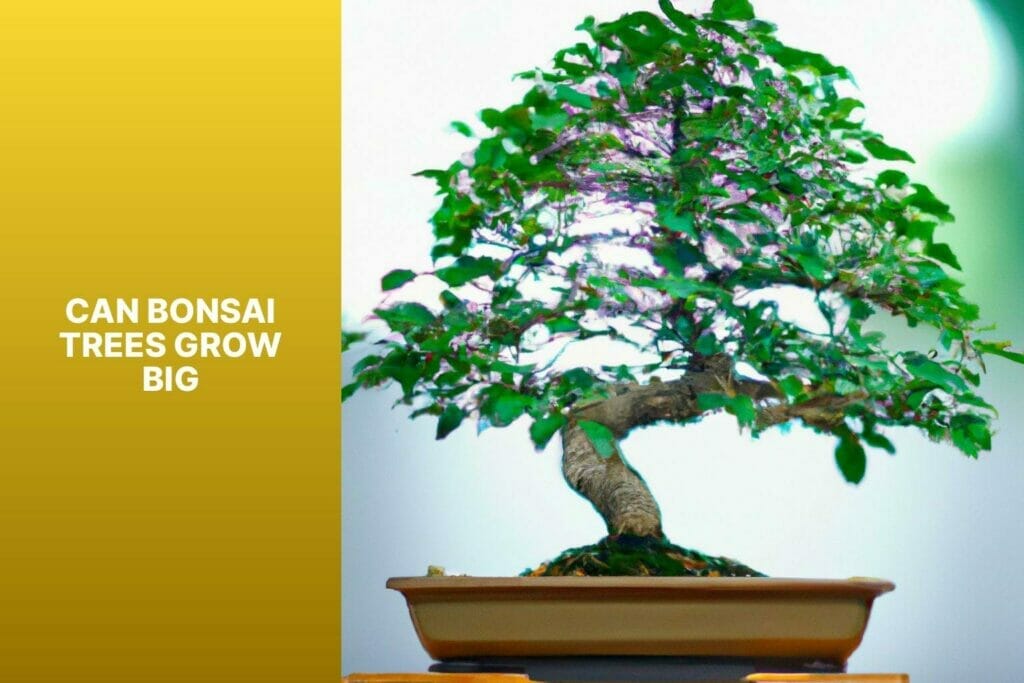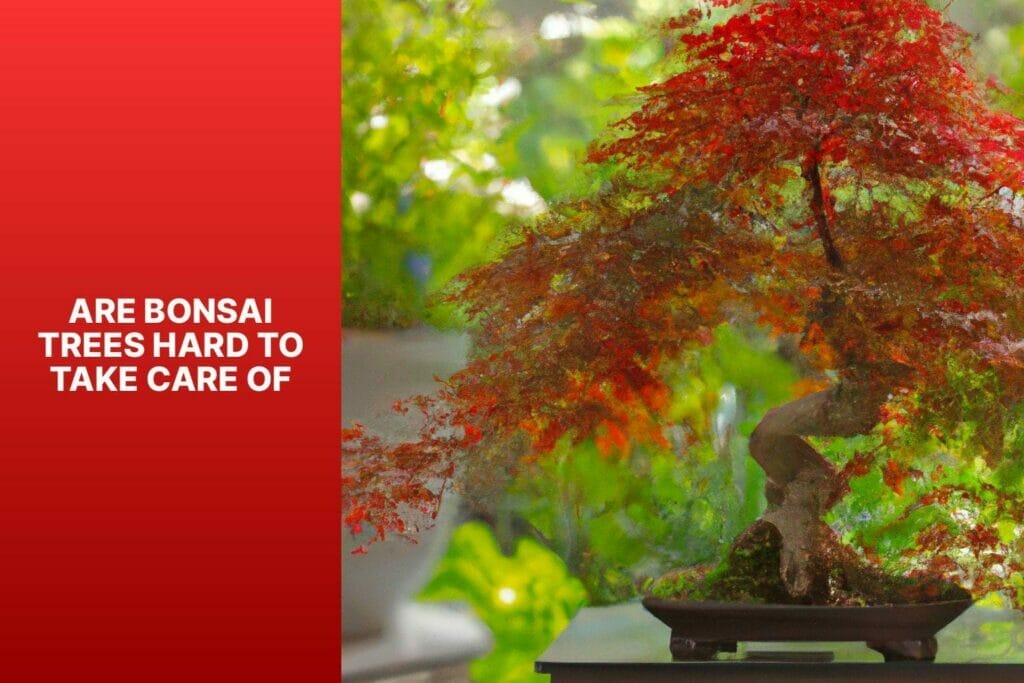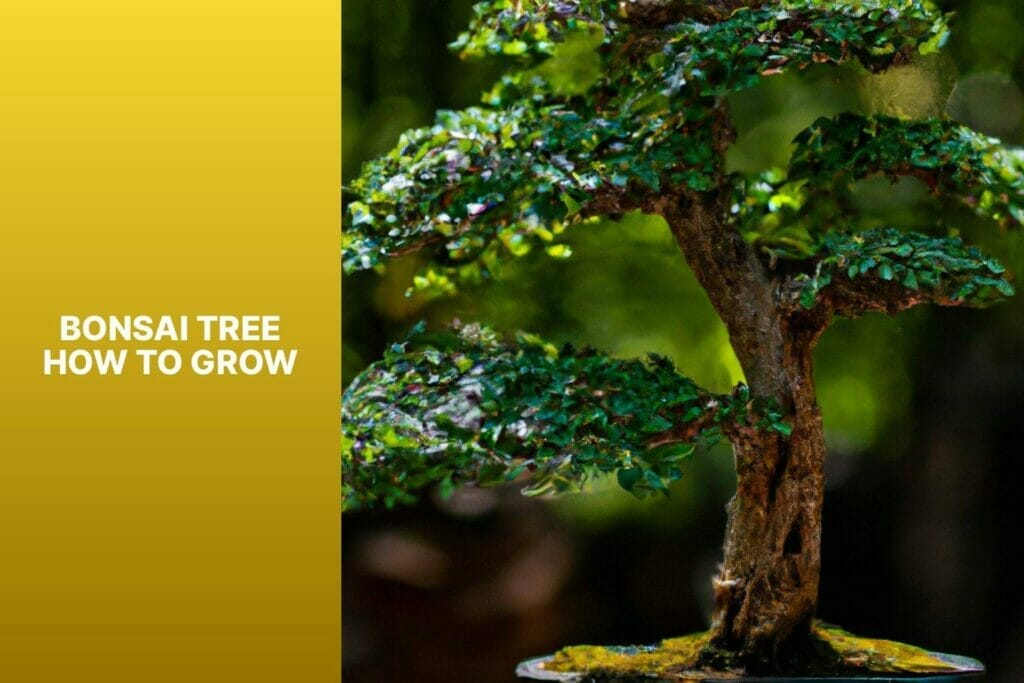Bonsai trees have fascinated people for centuries with their intricate and artful appearance. These miniature trees, meticulously maintained and shaped, create an aura of serenity and beauty.
In this article, we will explore the growth potential of bonsai trees and address the question: can bonsai trees grow big?
To understand bonsai tree growth, it is essential to comprehend the unique techniques used to cultivate and maintain these miniature trees.
Bonsai trees are cultivated in small containers, restricting their root growth and nutrient intake.
Prolific author and bonsai expert, Peter Adams, explains that bonsai trees can grow larger than their current size, but their growth is controlled through careful pruning and training.
Several factors influence the size of bonsai trees. These include the species of the tree, the age and health of the tree, the container size, and the specific care techniques employed.
By manipulating these factors, bonsai enthusiasts can control their trees’ size, shape, and appearance.
While bonsai trees can be cultivated to appear small and delicate, their growth potential is not entirely limited. Some bonsai tree species can grow more substantially with proper care and attention.
There are limits to how big bonsai trees can grow. The limited root space and restricted nutrient intake can prevent bonsai trees from achieving the size of their non-bonsai counterparts.
Several techniques can be employed to encourage bonsai tree growth and maximize their size.
Choosing the right species with larger growth potential, adequate spacing, and appropriate soil composition and implementing proper pruning and training techniques are crucial in promoting substantial bonsai tree growth.
Proper care is essential for the health and growth of bonsai trees. This includes proper watering and fertilization techniques and suitable temperature and light conditions.
By meeting the specific needs of the bonsai tree, its growth potential can be optimized.
Growing bonsai trees is not without its challenges. Bonsai trees, like any other plants, are susceptible to pests and diseases.
They may encounter growth plateaus where their growth slows down or stagnates. Overcoming these challenges requires careful observation, prompt action, and proper maintenance techniques.
Key takeaway:
- Bonsai trees can grow big: With proper care, bonsai trees have the potential to grow larger.
- Factors affecting bonsai tree size: Several factors, such as species selection, adequate space, soil, pruning, and training techniques, influence the size of bonsai trees.
- Encouraging bonsai tree growth: Choosing the right species, providing adequate space and soil, and using proper pruning and training techniques can promote larger growth in bonsai trees.
Understanding Bonsai Tree Growth
Discover the fascinating world of bonsai tree growth and unlock the secrets behind their size. This section will provide valuable insights from exploring the factors that influence the growth of bonsai trees to uncover the key elements that determine their ultimate size.
Prepare to delve into bonsai cultivation and understand how these miniature trees can thrive and flourish with proper nurturing. Get ready to embark on an exciting journey into the art of bonsai tree growth.
Factors Affecting Bonsai Tree Size
- Species: The type of bonsai tree chosen impacts its size. Some species grow larger and have the potential for bigger bonsai trees, while others are naturally smaller and better suited for miniature bonsai.
- Age: A bonsai tree’s age affects its size. Younger trees have more time to grow and develop, potentially reaching a larger size. Older trees may have already reached their maximum size.
- Growing conditions: The conditions provided to a bonsai tree influence its size. Factors such as sunlight, temperature, humidity, and soil quality can all affect the tree’s growth and development.
- Pruning and training: Proper pruning and training techniques control and shape the size of a bonsai tree. Regular pruning maintains the desired size and shape, while techniques like wiring can influence the overall form and size.
- Maintenance: Adequate care and maintenance, including watering, fertilization, and disease prevention, contribute to the health and size of a bonsai tree. Providing the proper nutrients and protection ensures optimal growth and size.
Can Bonsai Trees Grow Big?
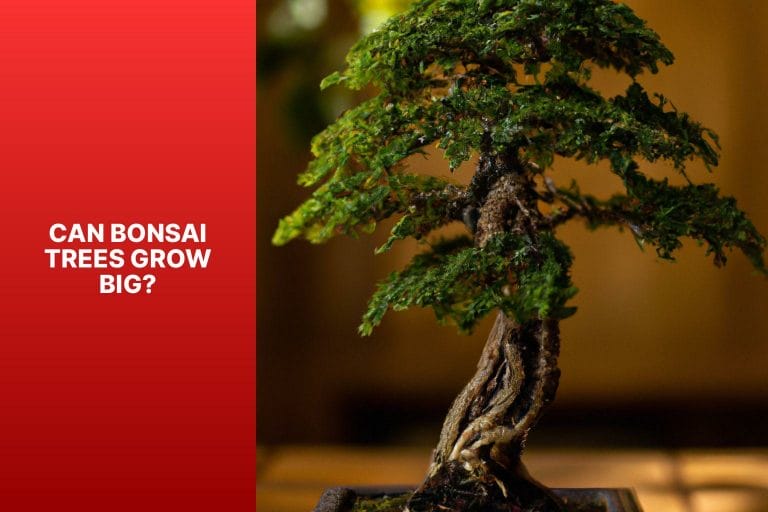
Photo Credits: Mnbonsainetwork.Com by Jeffrey Torres
Who says bonsai trees can’t grow big? In this section, we’ll dive into whether bonsai trees can reach impressive sizes. We’ll explore the limits to bonsai tree size, uncovering surprising facts and findings that challenge common misconceptions.
Prepare to be amazed as we explore these miniature trees’ incredible potential. Let’s find out if bigger is better in the captivating world of bonsai cultivation!
Limits to Bonsai Tree Size
Bonsai trees have growth limitations due to their small size and container-bound nature. The size of bonsai trees is primarily limited by the container or pot they are planted in. The restricted root space prevents larger growth.
Pruning and training techniques are also limitations to bonsai tree size. Regular pruning controls growth and prevents excessive size. The species of the bonsai tree also affects its size limitations.
Some tree species naturally have smaller growth habits, making them better for bonsai cultivation. Inadequate nutrition can restrict the size of bonsai trees. Proper fertilization is necessary for healthy growth.
To maximize the size of a bonsai tree, select a species known for larger growth habits and provide proper nutrition and care.
Periodically report the bonsai to allow root growth and use appropriate pruning techniques to maintain the desired size and shape.
Research the specific care requirements of your chosen bonsai species for optimal growth and development.
How to Encourage Bonsai Tree Growth
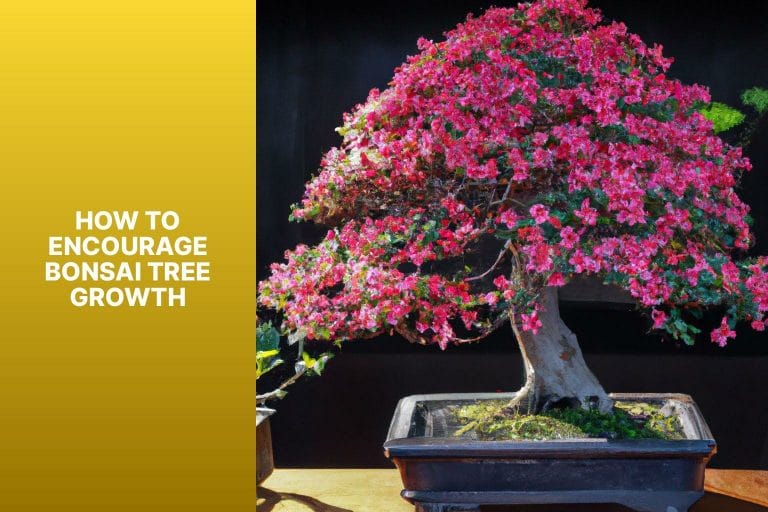
Photo Credits: Mnbonsainetwork.Com by Donald Nguyen
Are you looking to make your bonsai tree flourish and reach its full potential?
This section dives into the secrets of encouraging bonsai tree growth. Discover the key elements contributing to larger growth, from selecting the right species to creating a conducive environment with ample space and nutrient-rich soil.
Unveil the art of proper pruning and training techniques to help your bonsai tree thrive like never before. Get ready to unlock the full growth potential of your bonsai and create a stunning masterpiece.
Choosing the Right Species for Larger Growth
Species Size Potential Preferred Climate
| Japanese Black Pine | Large | Moderate to cool |
| Chinese Elm | Medium | Moderate to warm |
| Bald Cypress | Large | Moderate to warm |
| Japanese Maple | Small to medium | Cool to moderate |
When choosing a bonsai tree for larger growth, consider the species’ size potential and preferred climate. Some species naturally grow larger, while others are better suited for smaller sizes.
Japanese Black Pine is a species that can grow large, making it suitable for those who want a substantial bonsai tree.
Chinese Elm and Bald Cypress also have medium to large size potential, making them good choices for bigger bonsai trees.
On the other hand, Japanese Maple is better suited for smaller to medium sizes.
Consider the preferred climate of each species. Each species has its climate preferences. Japanese Black Pine and Maple prefer cool to moderate climates, while Chinese Elm and Bald Cypress thrive in moderate to warm climates.
By considering the size potential and preferred climate of different bonsai tree species, you can choose the right species for larger growth and create a bonsai tree that meets your preferences.
Remember to provide the necessary care, including proper watering, fertilization, and pruning techniques, to ensure the health and growth of your bonsai tree.
Providing Adequate Space and Soil
To provide adequate space and soil for bonsai trees, follow these guidelines:
1. Choose a proper-sized pot: Use a pot proportionate to the size of your bonsai tree. The pot should provide enough space for the roots to grow comfortably.
2. Use well-draining soil: Bonsai trees require wells to prevent waterlogging. Use a bonsai-specific soil mix that allows proper water drainage while retaining enough moisture for the roots.
3. Ensure proper soil depth: The soil in the pot should support the roots without being excessively deep. Avoid compacting the soil too tightly to give the roots room to breathe and expand.
4. Prune the roots regularly: Regular root pruning maintains an appropriate root system size and prevents overcrowding. Trim the roots during repotting to encourage healthy growth.
5. Allow room for growth: Provide enough space for the roots to spread out as your bonsai tree grows. Repot the tree every few years to prevent root binding.
When I started caring for my bonsai tree, I neglected the pot size and soil. As a result, the tree’s growth was stunted, and it wilted. After researching, I understood the importance of providing adequate space and soil.
I repotted the bonsai into a larger pot with well-draining soil. The tree quickly recovered and thrived. Now, I regularly monitor the pot size, soil condition, and root growth to ensure my bonsai stays healthy and continues to grow.
Providing the right space and soil is crucial for your bonsai tree’s long-term health and growth.
Proper Pruning and Training Techniques
Proper pruning and training techniques are essential for growing and maintaining a bonsai tree. It is important to follow these steps to ensure proper care:
1.
Begin by assessing the structure and shape of the tree. This will help you determine which branches should be pruned to achieve the desired shape and form.
2.
When pruning, make sure to use clean and sharp pruning shears. Cut at a slight angle just above a bud or leaf node to encourage new growth. This precise cutting technique is crucial for the health of the tree.
3.
Remove any dead, weak, or diseased branches. This improves the tree’s overall health and helps prevent the spread of diseases.
4.
If the tree has dense areas, thin them by selectively removing branches. This will allow light and air to reach the tree, promoting even growth.
5.
To shape and train the branches, you can use wiring. Gently wrap the wire around the branch to the desired position, careful not to exert excessive pressure that could cause damage.
6.
Regularly inspect and remove the wiring once the branch has settled into its new position.
7.
After pruning and wiring, thoroughly watering the bonsai tree is important. This will promote recovery and new growth.
8.
Monitor the tree’s growth, make necessary adjustments, or repeat the pruning and training process.
Remember, achieving proper pruning and training requires patience and skill. Take the time to learn about the specific needs of your bonsai tree and seek guidance from experienced enthusiasts or experts.
With practice and care, you can enhance the beauty and longevity of your bonsai tree.
Bonsai Tree Care Tips
Discover essential care tips for bonsai trees to ensure their healthy growth and development.
From watering and fertilization techniques to temperature and light requirements, this section provides actionable insights to help nurture your bonsai tree effectively.
Uncover the secrets to maintaining proper moisture levels and find out which fertilizer works best for optimal growth. Dive into the bonsai care world and unleash your miniature masterpiece’s potential.
Watering and Fertilization
Watering and fertilization are crucial for the healthy growth of bonsai trees.
When it comes to watering, it is important to maintain a consistent watering schedule and avoid excessive amounts of water.
It would be best to water the tree when the topsoil is slightly dry, considering factors such as the tree species, pot size, and weather conditions.
Ensure to water the tree until the water starts draining from the pot’s bottom holes.
Regarding fertilization, it is recommended to use a balanced and slow-release bonsai tree fertilizer regularly. Follow the instructions on the fertilizer package to determine the appropriate dosage and frequency.
Typically, it would be best to fertilize the tree every two to four weeks during the growing season.
To ensure optimal watering, it is advisable to water the bonsai tree in the morning or late afternoon. This allows the foliage to dry before the cooler evening temperatures.
Avoid watering during the hottest part of the day to avoid root rot or leaf burn.
Monitoring the soil moisture is crucial, and you can do this by using your finger or a moisture meter. Adjust the watering schedule according to the specific needs of the tree.
Watering and fertilization requirements may vary depending on the bonsai tree species, environmental conditions, and growth stage.
Regularly observe the tree and make adjustments to ensure its health and vibrancy.
Temperature and Light Requirements
Bonsai tree care relies on meeting the temperature and light requirements for optimal growth and health.
The temperature needs of bonsai trees fall between 60°F and 75°F (15°C and 24°C). It is crucial to provide suitable temperatures to avoid stress and damage to the tree.
Bonsai trees should receive at least 6 hours of direct or indirect sunlight daily to meet their light requirements. Placing the tree near a window or using artificial grow lights can fulfill this need.
It is important to prevent temperature fluctuations as they can cause stress to the bonsai tree. Sudden temperature drops can lead to shock, while constant exposure to high temperatures can result in dehydration.
Maintaining a stable temperature is essential for promoting growth.
Insufficient light can result in weak growth and poor foliage development. On the other hand, excessive light can cause leaf burn or scorching.
Striking the right balance in light intensity is vital for the tree’s photosynthesis and overall vitality.
Monitoring and providing the appropriate temperature and light conditions are necessary for the well-being of bonsai trees.
With the correct balance in temperature and light, these miniature trees can flourish and exhibit their natural beauty.
Bonsai trees have a rich history in Japan, dating back to ancient times. This art of cultivating and caring for miniature trees has been passed down through generations, embodying a deep sense of tradition and harmony with nature.
Maintaining bonsai trees involves meticulous attention to detail, including meeting their temperature and light requirements. Bonsai enthusiasts take immense pride in nurturing their trees, which can thrive for many years with proper care.
These cherished additions to gardens, homes, and offices worldwide bring a touch of elegance and serenity.
Common Challenges in Growing Bonsai Trees
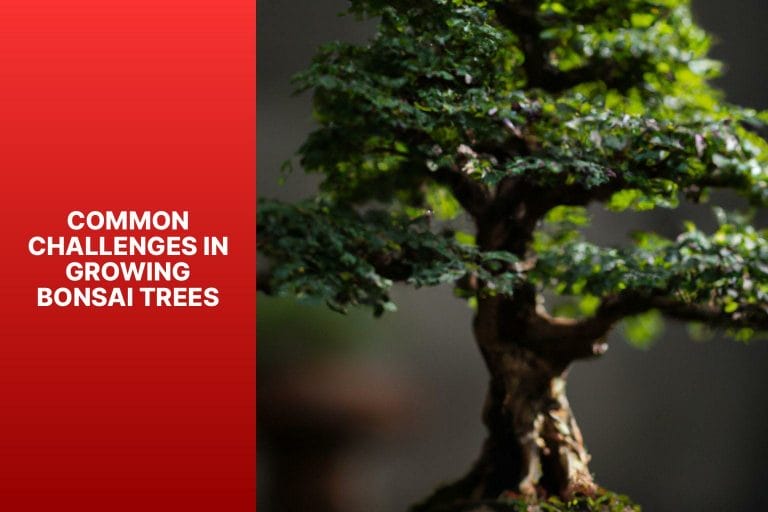
Photo Credits: Mnbonsainetwork.Com by Douglas Miller
Growing bonsai trees can be rewarding but has its fair share of challenges. In this section, we will explore some common hurdles bonsai enthusiasts face.
From pests and diseases that can threaten the health of our miniature trees to navigating through growth plateaus that may hinder their development, we will learn how to overcome these obstacles and ensure our bonsai trees thrive.
So, grab your pruning shears, and let’s dive into the world of bonsai challenges!
Pests and Diseases
Pests and diseases are common challenges that bonsai tree growers face. The health and vitality of your bonsai tree depend on your ability to prevent and manage these issues.
To keep your bonsai tree healthy, it is important to regularly check for signs of pests, such as aphids, scale insects, or mites. If you find any pests, take immediate action to eliminate them.
You can use methods like insecticidal soap, neem oil, or introducing natural predators to control the pests effectively.
Monitoring the overall health of your bonsai tree is crucial to spot any signs of disease. Fungal infections and root rot are common diseases that can affect bonsai trees.
Removing and destroying affected leaves or branches is important if you suspect your tree is diseased. Treating it with appropriate fungicides will help manage the disease.
Practicing proper care techniques for your bonsai tree is essential. This includes providing sufficient air circulation, avoiding overwatering, and ensuring proper drainage.
These techniques play a significant role in preventing both pests and diseases.
Regular pruning is necessary to maintain the shape of your bonsai tree and remove any dead or infected branches. This helps prevent the spread of disease and creates a healthier environment for your tree.
Remember, prevention is the key to dealing with pests and diseases. Regularly inspect your bonsai tree, follow good hygiene practices, and provide optimal growing conditions to keep pests and diseases at bay.
By being vigilant and taking prompt action, you can ensure the long-term success of your bonsai tree.
Overcoming Growth Plateaus
To overcome growth plateaus in growing bonsai trees, follow these steps:
1. Evaluate the bonsai tree’s current state for signs of stunted growth or lack of progress.
2. Adjust the watering and fertilization routine to provide the right water and nutrients. Monitor soil moisture levels and make adjustments as needed.
3. Consider repotting the bonsai tree with a well-draining soil mix and a suitable pot size.
4. Prune and trim the bonsai tree using proper techniques to stimulate new growth and prevent stagnation. Remove any dead or unhealthy branches and shape the tree for desired growth.
5. Pay attention to light exposure and temperature conditions. Place the bonsai tree in an area with sufficient light and the appropriate temperature range.
6. Monitor pests and diseases regularly. Inspect the tree for signs of infestation or disease and take necessary measures to control and prevent them.
By following these steps, you can effectively overcome growth plateaus in bonsai tree cultivation and ensure healthy and vigorous growth. Remember, patience and consistent care are key to achieving successful results.
Some Facts About Can Bonsai Trees Grow Big:
- ✅ Bonsai trees can grow bigger than their original size. (Source: Our Team)
- ✅ Bonsai trees can be wired after four years of growth and kept in containers for up to ten years. (Source: Our Team)
- ✅ pruning is necessary for bonsai trees, but it takes time for them to regrow, and choosing branches with several leaves and woody branches will help the leaves grow bigger. (Source: Our Team)
- ✅ Bonsai trees require less fertilizer when fully grown. (Source: Our Team)
- ✅ Bonsai trees can stay small by pruning the branches to a height of three to four nodes and by being placed in shallow bonsai pots that restrict root expansion. (Source: Our Team)
